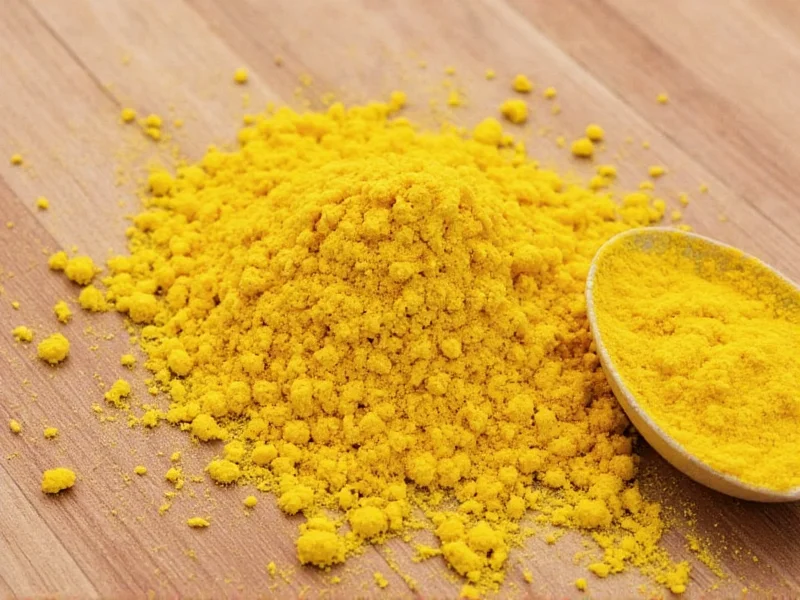The best substitutes for powdered mustard are: 1) Prepared yellow mustard (use 1 tablespoon for every 1 teaspoon of powdered mustard), 2) Mustard seeds (1.5 teaspoons crushed seeds per teaspoon of powder), 3) Horseradish (1:1 ratio with flavor adjustments), 4) Wasabi paste (diluted 1:2 with water), and 5) Turmeric with vinegar (for color only). Each substitute works best in specific recipes depending on required flavor intensity and moisture content.
Understanding Powdered Mustard and Why Substitutions Are Needed
Powdered mustard, also known as dry mustard, provides concentrated tangy flavor without added moisture. Home cooks often need substitutes when they've run out of this pantry staple or seek alternatives for dietary restrictions. Unlike liquid mustards, powdered form dissolves completely in recipes, making substitution calculations essential for maintaining proper recipe balance.
Top 5 Powdered Mustard Substitutes with Exact Ratios
Choosing the right substitute depends on your recipe's moisture requirements and desired flavor profile. Here's how each alternative performs in different cooking applications:
| Substitute | Conversion Ratio | Best For | Flavor Notes |
|---|---|---|---|
| Prepared Yellow Mustard | 1 tbsp = 1 tsp powder | Marinades, dressings, wet recipes | Milder flavor, adds moisture |
| Mustard Seeds (crushed) | 1.5 tsp = 1 tsp powder | Dry rubs, spice blends, baking | More pungent, slight texture |
| Horseradish (prepared) | 1 tsp = 1 tsp powder | Meat dishes, hearty sauces | Sharper heat, different flavor profile |
| Wasabi Paste | 1/2 tsp diluted = 1 tsp powder | Asian-inspired dishes | Intense heat, distinct flavor |
| Turmeric + Vinegar | 1/4 tsp turmeric + 1 tsp vinegar | Color replacement only | No mustard flavor, just yellow hue |
When to Use Each Substitute
Understanding how to substitute dry mustard in recipes requires considering both chemical properties and flavor impact. Prepared mustard works best in wet applications like salad dressings or barbecue sauces where the extra liquid won't affect texture. For dry rubs or baked goods where moisture balance is critical, crushed mustard seeds provide the closest approximation without altering recipe hydration.
Chefs often ask what can I use instead of mustard powder in cheese sauces. In this specific application, a combination of 1 teaspoon prepared mustard plus 1/4 teaspoon white wine vinegar creates the ideal tang without thinning the sauce. The vinegar's acidity mimics the sharpness that evaporates from dry mustard when cooked.
Flavor Adjustment Techniques
When making homemade substitute for powdered mustard, remember that liquid alternatives require compensating for added moisture. For every tablespoon of prepared mustard used as replacement, reduce other liquids in your recipe by 1-2 teaspoons. This maintains proper consistency in batters, doughs, and sauces.
For those seeking dry mustard substitute for baking, mustard seeds provide the most reliable results. Grind them in a spice grinder to fine powder consistency, then let the mixture sit for 10 minutes after adding 1/4 teaspoon of water per teaspoon of seeds. This activates the enzymes that create that distinctive mustard flavor.
Common Substitution Mistakes to Avoid
Many home cooks make critical errors when attempting powdered mustard replacement ratios. Never use straight wasabi powder as a 1:1 substitute—it's significantly hotter than mustard and will overwhelm your dish. Similarly, horseradish requires careful balancing with sweet elements to counter its sharper heat profile.
When substituting in delicate recipes like deviled eggs or cheese spreads, always start with half the recommended amount, then adjust to taste. The flavor compounds in liquid substitutes distribute differently than dry powder, often requiring incremental additions for perfect seasoning.
Storage Considerations for Substituted Recipes
Recipes using mustard powder replacement in marinades may have different shelf lives. Liquid substitutes introduce additional moisture that can accelerate spoilage. Dishes made with prepared mustard substitutions typically maintain freshness for 3-4 days refrigerated, compared to 5-7 days for recipes using dry mustard powder.
Practical Application Guide
For immediate cooking needs, keep this quick reference:
- Barbecue sauces: Use prepared yellow mustard at 1 tbsp per tsp powder
- Dry spice rubs: Substitute with freshly ground mustard seeds
- Cheese sauces: Combine prepared mustard with white wine vinegar
- Salad dressings: Diluted wasabi works well in Asian vinaigrettes
- Baked goods: Mustard seed powder maintains proper moisture balance
Frequently Asked Questions
Can I use regular mustard instead of dry mustard in a recipe?
Yes, use 1 tablespoon of prepared yellow mustard for every 1 teaspoon of dry mustard required. Remember to reduce other liquids in your recipe by 1-2 teaspoons per substitution to maintain proper consistency, especially in baking applications.
What's the best dry mustard substitute for someone with mustard allergies?
For mustard allergies, horseradish provides the closest flavor profile without allergens. Use a 1:1 ratio of prepared horseradish, but balance with 1/4 teaspoon honey per teaspoon to counter the sharper heat. Turmeric with vinegar works for color but won't replicate the tangy flavor.
How do I substitute mustard powder in a low-sodium recipe?
For low-sodium needs, use freshly ground mustard seeds (1.5 tsp per tsp of powder) mixed with 1/4 tsp water. This provides the authentic mustard flavor without added salt. Avoid prepared mustards which typically contain significant sodium unless specifically labeled 'low sodium'.
Why does my substitute not taste like real powdered mustard?
Powdered mustard's unique flavor develops when mixed with liquid. If using seed substitutes, let the mixture sit for 10-15 minutes after adding moisture to activate the enzymes. For prepared mustards, add 1/8 teaspoon vinegar to enhance the tangy profile that mimics dry mustard's characteristic sharpness.











 浙公网安备
33010002000092号
浙公网安备
33010002000092号 浙B2-20120091-4
浙B2-20120091-4